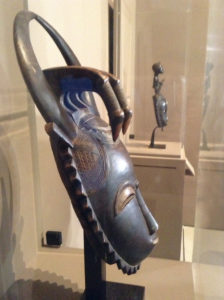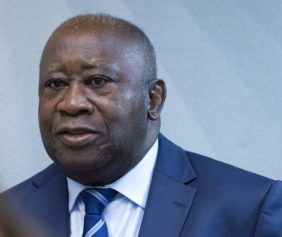
Artwork by Kuakudili on display at the ‘Masters of Sculpture from Ivory Coast’ exhibition, currently running at the Quai Branly Museum in Paris. Credit: A.D Mckenzie/IPS
Paris — Quick now, can you name a famous African sculptor from the 1800s or even the early 20th century?
Anyone able to answer positively is part of a select minority—most museum-goers have become used to seeing traditional African carvings without knowing the name of the artist.
But some experts are taking steps to change this, with the most extensive exhibition devoted to identifying Africa’s expert sculptors now on in Paris at the Quai Branly Museum — a venue devoted to the indigenous art of Africa, Asia, Oceania and the Americas that is sometimes criticized for having “colonial undertones.”
The exhibition, titled “Masters of Sculpture from Ivory Coast,” features nearly 330 historical and contemporary works and artifacts, and runs until July 26. It comes at a time when the market for traditional African art is at its highest in decades, with pieces fetching record prices, amid debate about whether these objects should be “returned” to Africa.
The show pays tribute to the remarkable artistry of the sculptors, who were often given the title of “master” in their homeland. The timeless splendor of some of the objects will help to explain the current collecting craze. But the exhibition may also add fuel to the discussion about who should own works that reflect a region’s cultural heritage.
“Art really has no fatherland,” says the exhibition’s co-curator Eberhard Fischer, an ethnologist and Director Emeritus of the Rietberg Museum in Zurich, Switzerland.
“The interest of the artist might not be the same as the interest of the nation. Museums are responsible to the artist, and should honor them in the right way,” he added. “African art, European art, Indian art should be seen all over the world. We’re in the 21st century.”
He told IPS that what was “special” about the exhibition is the attempt to reveal the creators “behind the masterpieces,” in contrast to the objects being presented in a general context as tribal art created by anonymous makers.
“My aim is to put these masters on a pedestal and to say ‘these were great men,'” Fischer said. “They were never given the same status as Western artists, and it’s time their individual skills were highlighted.”
In the notes to the exhibition, Fischer and co-curator Lorenz Homburger state that “African sculpture has a central place in the history of art,” and they indicate that the identification of traditional artists contributes to the recognition of this role.
“Too often considered in the West as an artisanal production only involved in ritual activities, African art — just like Western art — is produced by individual artists whose works display great artistic and personal skill,” the curators stress.
Read the full story from A. D. Mckenzie at allafrica.com


